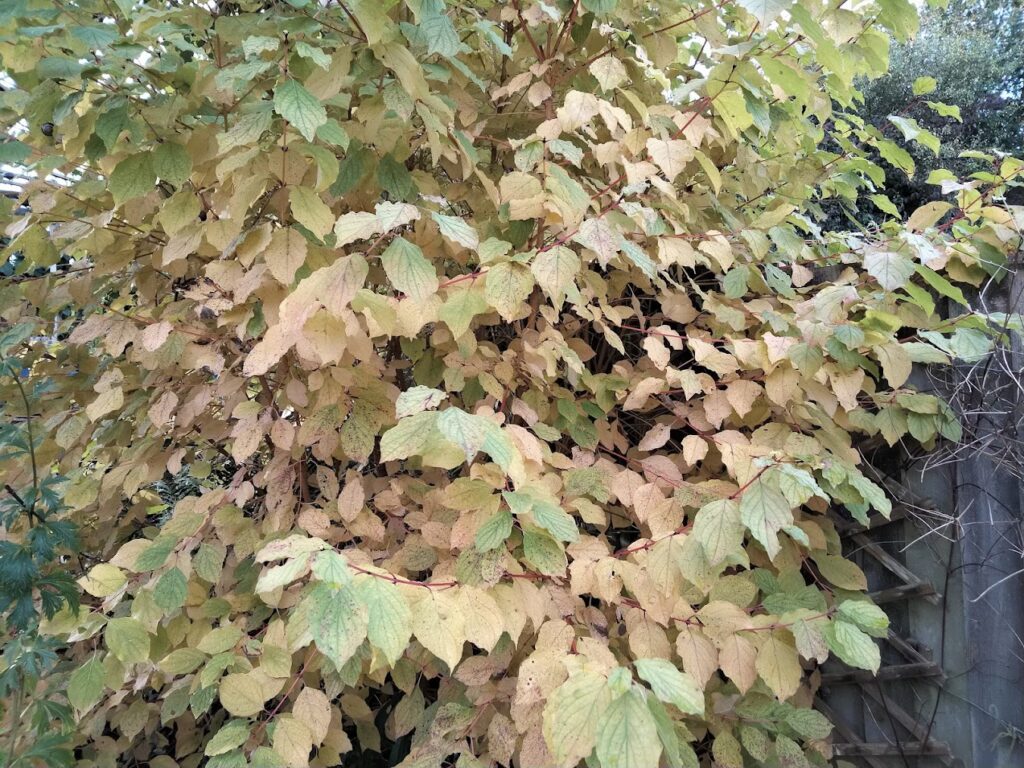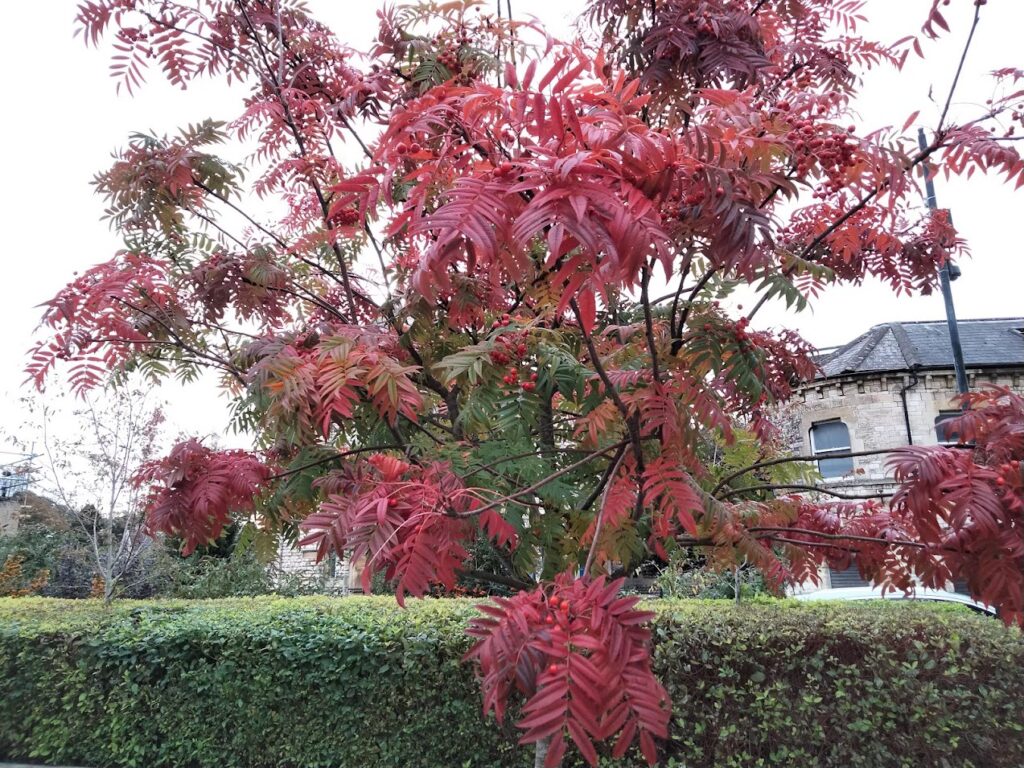Autumnal Hues
With the shorter days and cooler nights triggers our deciduous trees and shrubs to start taking on an autumnal mantle. Many of the leaves around us change from green into a glorious golds, oranges and russets, fiery reds and glorious purples and many other hues. In some years where the summers are wet the autumnal hues are not as intense but in years where there has been drought and the trees and shrubs have been put under stress then the autumnal period is often quite spectacular.
All our trees and shrubs that are deciduous go into this period of shutting down and go dormant for the winter. It is quite an interesting process where the chlorophyll (green) is taken back into the stems, branches and trunk and stored along with sugars. As the green pigment is absorbed from the leaves the yellow and orange pigments are then reveled. All leaves whether they be deciduous or evergreen have the two pigments beneath the green pigments. The yellow pigment is called Flavonoids and the orange pigments are called Carotenoids.
In some of our deciduous trees and shrubs the sugars get trapped within the leaves and these trapped sugars create fiery reds and purples. The more intensity of trapped sugars the more purple the leaves can get. The pigment that causes reds and purples is a pigment called Anthocyanins.
There are many trees and shrubs in our gardens native and from much further afield that create quite stunning autumnal hues for our gardens. A lot of our native trees and shrubs on the whole produce yellows, oranges and russets. With a few exceptions that create stunning reds and purple autumnal hues.
Let’s look at some of the autumnal stunners to consider for your garden; –
Acer,
There are many Acer or maples that have quite astounding autumnal. Acer saccharum turns a lovely orange / red. Also Acer rubrum as the names suggest turns a stunning fiery red. A lovely hybrid between the two Acer x freemanni. It has the lovely maple leaves of A saccharum and the glorious fiery colour of Acer rubrum. These trees are stunning but if you have a small garden then not overly suitable as they are quite large. For the smaller gardens you could look at the Japanese maples, Acer palmatum which are generally smaller maples. You can grow these in pots or the ground if your soil is on the acidic side. Acer palmatum purpureum dissectum turns an amazing scarlet in autumn. The green version of this plant turns a glorious orange and gold. Acer palmatum orange dream turns a super apricot. Acer palmatum Osakazuki turns a brilliant red.
Liquidambar,
Known as the sweet gums. These make large trees in our gardens and have maple like leaves. In autumn the leaves turn a fantastic red and purple and the leaves stay attach for weeks. Liquidamdar styraciflua worplesdon is the most popular to grow. However, Liquidambar ‘Lane Roberts’ a selected clone for its reliable blackish red purple leaves in autumn. For the smaller gardens a narrow version with good colour Liquidambar Silhouette can make a stunning display.
Ginkgo,
The maidenhair tree reaching 20/30 feet in it lifetime and although not suitable for our gardens they are often planted as street trees. The leaves turn a spectacular gold. There are some smaller varieties that can be grown in our gardens.
Betula,
Our own native birch tree turns a yellow in autumn but for the best the cultivars like Betula ‘Jacquemontii which have larger leaves and turn gold.
Cercidophyllum,
The Katsura trees. Makes a lovely dome shaped tree with heart shaped leaves. In autumn turning a lemon yellow but the most remarkable thing about this tree is that when the leaves die, they smell of burnt sugar.
Parrotia,
The iron wood tree, I say tree more like a large spreading shrub that’s leaves turn red and orange in autumn.
Prunus,
Whether it be our own wild bird cherry or cultivated cherry’s in our gardens both large and small they all turn wonderful orange and fiery reds in autumn.
Euonymus,
The spindles are not such an exciting plant. The trees tend to be a little twiggy and sprawling. The shrubs however are compact. There is two things with euonymus is that the leaves in autumn turn a pinky red and they also have quite amazing pink capsule and orange berries. Euonymus alatus compactum for the garden is a must.
Sorbus,
These trees are very suited for our gardens they are mostly small trees that are open, known as the rowans, they have lovely pinnate leaves and often orange, red, white, yellow or pink berries. In autumn these trees turn fiery reds and oranges. Our native Sorbus aucuparia has lovely big clusters or orange berries and glorious autumnal hues.
Rhus,
The sumach. A great suckering shrub/tree and has large pinnate leaves and turn wonderful golds and oranges for the autumn.
Some of the deciduous conifers like Larix (larch) turn yellow and russet colours. There are a few others like Taxodium and Metasequoia both turning golden brown russets.
There are some climbers that we are familiar with like Virgina creeper or Boston ivy both turning rich reds. There is also a marvelous climbing Hydrangea that turns white and gold before the leaves drop. Then there is a rather large grape, Vitis coignetiae with its impossible large oval leaves turning from yellow through orange in to fiery reds.
Even some herbaceoius plants can produce autumnal interest. Gillenia to my surprise turns orange through to red, some of the rose bay willow herbs turn orange as well.
What ever plants you chose for your gardens keep in mind autumn color.
Below is a gallery of pictures relating to October










